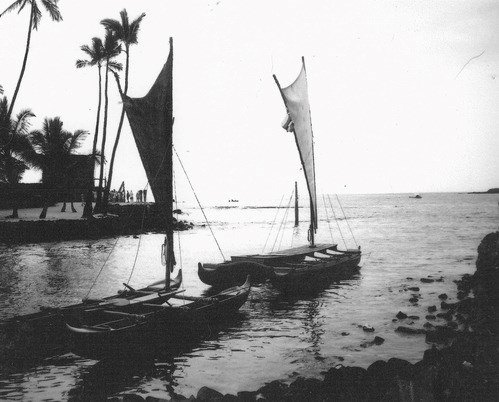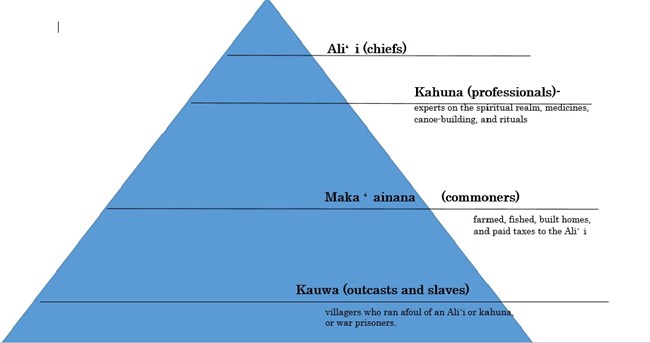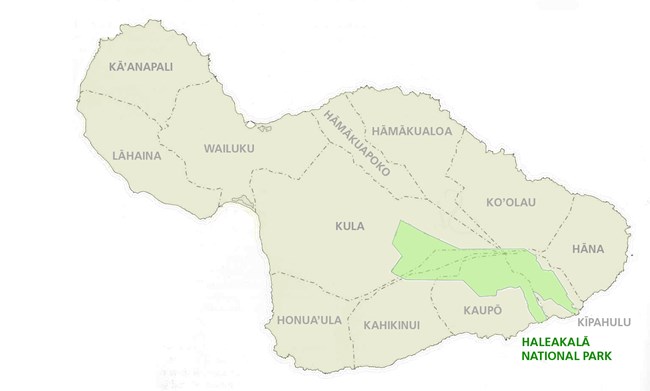
NPS Photo Settling the IslandsComing from a tradition of voyaging expertise and canoe making, Polynesians from the area now known as the Marquesas Islands were the first humans to visit and settle the Hawaiian Islands between 1000- 1200 AD. Keen observers of natural phenomenon such as the stars, migratory birds, ocean currents, rainbows, and whales, Polynesians crossed over 2,000 miles of ocean in double-hulled canoes called “Waʻa.” 
NPS Graphic Social HierarchyDuring this time, the social heirarchy was delineated into a strict caste system. At the top of this social pyramid were rulers known as Aliʻ i (chiefs.) On the next rung below the Aliʻ i were the kahuna (professionals,) who were experts on the spiritual realm, medicines, canoe-building, and rituals. Below them were the maka ʻainana (commoners) who farmed, fished, built homes, and paid taxes to the Aliʻi. The lowest rung were the kauwa (outcasts and slaves.) Kauwa were villagers who ran afoul of an Aliʻi or kahuna, or were war prisoners. 
NPS Graphic Native Hawaiian Land Divisions- MokuPrior to European contact Native Hawaiian rulers divided the Hawaiian Islands into distinct political regions. On each of the four larger islands: Kaua'i, O'ahu, Maui, and Hawai'i, lands were divided into wedge-shaped districts called moku. The moku were further divided into land sections called ahupua'a. Ahupua'a were often bounded by ridgelines and typically encompassed an entire valley from mountain summit to outer reef. This type of land division allowed for each ahupua'a to contain nearly all of the resources that its inhabitants required for survival. The island of Maui is divided into twelve moku, eight of which intersect within Haleakalā National Park. On the northeast edge of Haleakalā Crater the upper ends of the moku converge into one point, called Pōhaku Pālaha- understood in the literal sense as meaning a smooth or flattened rock. It may also be described as the center from which eight districts of East Maui originate and "spread out" from. For some Native Hawaiian's the Pōhaku Pālaha is also a representation of the concept of the piko. The piko, or belly-button, is considered a very sacred part of a person's body by Native Hawaiian's, and the Pōhaku Pālaha is considered by some to be the piko for the island of Maui. |
Last updated: June 8, 2021
